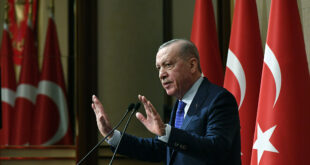- How to Assess the Ukrainian Counteroffensive
As the Ukrainian counteroffensive unfolds, the Western strategic community has found itself wading through the Ukrainian Armed Forces’ operational security measures and the Kremlin’s political warfare and information operations efforts. This is how Carl von Clausewitz’s famous fog of war manifests in a digitally connected battle space. While Kyiv strives to avoid the unnecessary dissemination of critical real-time intelligence, Moscow, through military blogs and Telegram channels, deliberately bombards digital networks with evidence of Ukrainian casualties.
Open-source defense intelligence is enjoying its golden age in the twenty-first century. The internet and social networks have profoundly changed the nature of intelligence gathering and analysis. Nevertheless, without a clear analytical framework, an overwhelming flow of raw data can obfuscate more than illuminate.
Hudson Institute’s Ukraine Military Situation Report follows two principles when conveying intelligence assessments. First, we thoroughly vet social media sources. While social media posts showcasing engagements can shed light on tactical trends, they do not offer a complete strategic overview of the fight. Thus, while such sources can indicate the presence of certain weapons systems on a particular front, they cannot tell us whether that system is being used to alter the course of the conflict. We therefore assess them with the strictest scrutiny. Second, our reports emphasize major changes in battlefield geography rather than rapidly evolving minor skirmishes. In a dynamic conflict, small villages can change hands multiple times. So we emphasize significant shifts, such as the breach of a main defensive line or the envelopment of a combat sector.
- The Combat Operations Assessment
The Ukrainian military is conducting a series of frontal assaults on prepared defensive positions, searching for opportunities to break through Russian lines. These are highly attritional efforts that result in high casualties. Our monitoring of the conflict suggests that several factors are contributing to Ukraine’s personnel and material losses, including the presence of minefields and the prowess of Russian army aviation, defense, and artillery units. At the time of writing, visually documented Ukrainian losses include at least one Leopard-2A4 and three Leopard-2A6 main battle tanks, as well as 16 M2A2 Bradley infantry fighting vehicles, particularly damaging losses.
Russian aviation efforts, particularly from rotary-wing attack platforms, have fared incomparably better thus far than at the outset of the conflict. In several cases, available visual evidence has showcased Russian gunships firing anti-tank rockets from low altitudes at Ukrainian armor that is unaccompanied by maneuver short-range air defense (M-SHORAD) systems. In one incident, for example, a Russian Ka-52 attack helicopter pounded a column of Bradleys that lay largely unprotected in the absence of organic maneuver short-range air defense capabilities.
- The Strategic Assessment
As previous editions of this report anticipated, the epicenter of the Ukrainian counteroffensive revolves around Zaporizhzhia Oblast. At present, the Ukrainian Armed Forces are pushing forward from positions along the Orikhiv and Velyka Novosilka axes, attempting to repel Russian detachments southward. Both efforts are frontal assaults. Eventually, these two offensive axes are designed to push into the Sea of Azov cities of Melitopol and Mariupol, respectively. The axis originating in Orikhiv aims to advance into the highway-hub city of Tokmak in the south. If it reaches the Russian defenses there, the Ukrainian high command will need to decide whether to risk urban warfare operations to take control of the city or to bypass it and cut further south.
Our defense intelligence monitoring suggests a third axis close to the embattled city of Vuhledar. While these operations are in the early stages, it is likely that Ukrainian combat operations here aim to protect the left shoulder of the Velyka Novosilka and Orikhiv assaults from Russian units in the southeast. The Ukrainian military must maintain a strong front here to prevent the main effort from being flanked and enveloped.
Ukrainian counteroffensive actions are also occurring in Bakhmut in the east, though efforts here are not a main pillar of the operation. One also needs to keep an eye on the Russian Volunteer Corps and Freedom of Russia Legion for any further operations in Belgorod.
More important, evidence suggests that the Ukrainian Armed Forces have already accumulated some ten brigades in Zaporizhzhia Oblast, despite Russia’s placement of additional units there following the catastrophe at the Nova Kakhovka Dam on the Kherson front. At the time of writing, the Ukrainian military’s efforts are gradually intensifying across operational sectors in Donetsk and Zaporizhzhia.
This buildup has allowed Ukraine to establish favorable force-to-force and force-to-terrain ratios, paving the ground for tactical advances. This will bring Ukrainian units closer to Russia’s main lines of defense, which Russian engineering units have long been preparing to face the Ukrainian onslaught.
Military assessments of battlefield imagery show that the Russian military has established a massive defensive line with fortifications exceeding 2,000 kilometers in length. These positions cover the Russian main, dive into Belarus, and extend to occupied Ukrainian territories in the Dnipro delta.
Of course, the most heavily fortified of these defenses are in Zaporizhzhia Oblast. There, a complex system of artillery kill boxes that overlap minefields, a cobweb of trenches and firing positions, dragon’s teeth to stop heavy armor, and troublesome ditches pose a substantial threat to Ukraine.
- The Geopolitical Assessment
Ahead of NATO’s upcoming summit in Vilnius, the Ukrainian counteroffensive is of great significance for the future of the European security architecture. Should Ukraine score a decisive victory, the Russian elite’s revisionist dreams of rejuvenating the Soviet empire will have hit a hard wall. Should Ukraine fail to win, the prospects of a protracted conflict might exacerbate differences among the nations of the transatlantic alliance.
The Ukrainian military is now conducting a large-scale counteroffensive campaign against fortified defensive positions without local air superiority. This is the riskiest mission of the twenty-first century. The untenable status quo, which cuts Ukraine off from the Sea of Azov and envelopes Odesa in an effective blockade while overstretching the capacities of Western defense industries, makes Ukraine’s best efforts essential.
 Eurasia Press & News
Eurasia Press & News


